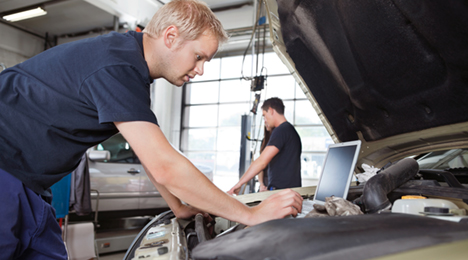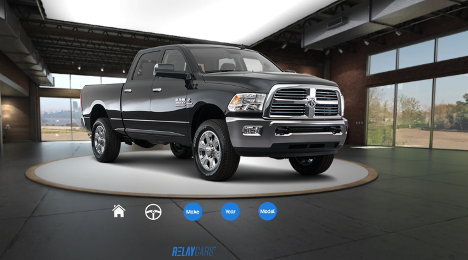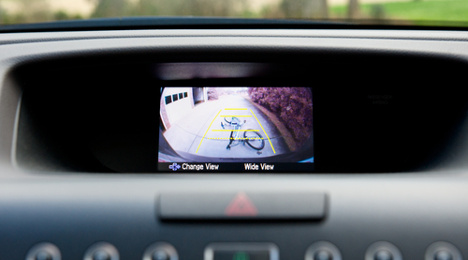Faulty oxygen sensors are still the most common cause of a check engine light, says the the 2017 CarMD Vehicle Health Index released Tuesday.
According to CarMD’s findings, model-year 2005 vehicles were most likely to have a check engine light on and newer-model 2015 and 2016 vehicles make up less than 1 percent of reported check engine incidents.
"While check engine issues can occur on any age vehicle at any time for many different reasons, this report reminds owners of 10- to 12-year-old vehicles to be vigilant with their maintenance routines and to be prepared for the possibility of a check engine light repair," CarMD technical director David Rich said in a news release. "CarMD has monitored car repair and maintenance trends for two decades and found that when vehicles are properly maintained, they tend to experience fewer check engine light problems than those whose owners put off scheduled maintenance and small repairs."
CarMD examined data from 5.3 million-plus 1996-2016 vehicles inside the U.S. and on the roads during 2016.
Analysts took a look at 5,345,588 repairs reported to and validated by CarMD's network from January 2016 up to the end of December.
Last year, the average cost to repair a check engine problem was $398, which is up 2.7 percent year-over-year, according to the index.
Five top common problems found to trigger the check engine light in 2016, according to the index, were a faulty oxygen sensor, catalytic converter, ignition coil and spark plug issue, loose or damaged fuel cap and faulty mass air flow sensor.
The following lists the five c check engine light-related car repairs along with their average repair costs, according to CarMD.
1. Replace oxygen sensor – $258
2. Replace catalytic converter – $1,190
3. Replace ignition coil(s) and spark plug(s) – $401
4. Tighten or replace fuel cap – $17
5. Replace mass air flow sensor – $378
“Car repairs and associated costs can be affected by region, maintenance decisions of previous owners, as well as the vehicle's age,” CarMD said.
In the West, vehicle owners had a 1.1-percent drop in car repair costs, drivers in the Northeast paid the most for check engine repairs and drivers in the Midwest paid the least for parts and labor, according to the the automotive diagnostic information provider.
The report also found that vehicle age affects the likelihood of engine light-related car repair as well as the type of repair.
CarMD said 11-year-old model year 2005 vehicles accounted for 10.8 percent of check engine issues reported to CarMD in 2016 and were most likely to report having a check engine light on.
The full Index includes: the 25 most common check engine-related repairs; the percent of reported check engine light repairs by vehicle age; an 11-year history of U.S. car repair costs; a list of the most common repairs by region; and the 10 least and most expensive repairs.
To view the detailed 2017 CarMD Vehicle Health Index report click here.
Additionally, the automotive diagnostic information provider has introduced a new service called CarMD Garage now available online at www.carmd.com/garage, which aims to guide consumers to make informed decisions regarding repair, maintenance, used car and parts purchases.
CarMD Garage was designed to help car owners keep up with car maintenance by providing reports that show any services due on their vehicle, according to CarMD.
NextGear Capital announced recently that it has enhanced its website by adding more tools and resources that help dealers manage their vehicle and business needs.
NextGear said its site now delivers more convenient access to information. The newly enhanced site connects dealers to increased educational resources, lending products and auction sites that accept NextGear lines of credit, according to the company.
“With dealers’ ‘need for speed’ in mind, and in response to requests for easier access to information, we revamped our website to better meet their needs,” Shane O’Dell, president of Cox Automotive Financial Solutions, said in a news release. “We are always looking for ways to help our dealer clients grow their business and retain cash flow.”
The updated site offers two key new features that make it an easy-to-use resource hub, NextGear said.
It’s new Auction Finder tool allows dealers to quickly find auto auctions that take NextGear lines of credit. Auctions can be found locally or anywhere in the country just by entering a name and state or location into the search mechanism.
A new Dealer Resources tab offers access to Cox Automotive data and research, shopper insights, best practices, research and market reports, and more.
“The new tools on NextGear Capital’s website and app help us make quicker, better decisions,” Keith Yamanaka of Chicago Cars Direct said. “We have peace of mind about our choices knowing what vehicles are moving in the marketplace and the going rates.”
Additionally, its website now offers greater visibility of the company’s product offerings along with a rotating banner that displays any of its latest updates.
EVOX Images has launched the 6.0 version of its free virtual reality app RelayCars, which features an expansive and high-quality VR automotive library that allows users to tour the interior and exterior of more than 700 vehicles with Samsung Gear VR.
Since its inception, the app has been downloaded more than 900,000 times, according to EVOX.
“We are excited to bring consumers the most comprehensive automotive VR application on the market and enhance the way people buy cars,” EVOX chief executive officer David Falstrup said in a news release. “Our goal is to make you feel like we just put you in the driver’s seat of your favorite car. RelayCars 6.0 features coverage for every model in our vast library, giving consumers access to an unprecedented number of vehicles, completely free on the app store.”
Through six different virtual showrooms, the app lets users explore more than 700 make and models that have been on the market since 2015.
EVOX utilizes its 360-degree imaging to power its new virtual reality technology.
Currently, it supplies automotive imaging to more than 20,000 dealer websites and the top automotive websites, according to the company.
“Within the past year, the EVOX VR team has extended technology offerings with the introduction of showrooms, virtual cinema, vehicle configurator capability, VR product clinics, and more,” EVOX said. “These new virtual shopping features will benefit dealers by building customer engagement and driving store traffic.”
RelayCars 6.0 is now available on the Oculus Samsung Gear VR Store.
To learn more, visit evoxvr.com on your smartphone, and view with Google Cardboard and similar VR mobile headsets.
The American International Automobile Dealers Association (AIADA), along with Cox Automotive, will host a free AutoTalk webinar on April 18 to discuss best practices for hiring and retaining dealership employees.
The upcoming talk will feature Nicole Ashe, Cox Automotive’s vice president of talent, diversity, and culture.
AIADA said Ashe would expound on the following list of topics.
- How to hire the best in class through recruitment and staffing
- How to employ a fast track to sales and service with an onboarding/new hire program
- Make it stick with dealership culture resulting in better retention and less turnover
- Grow from within through continuous development, cross-training, and leadership development
“Hiring is an elimination process, not an inclusion process,” AIADA said in a news release. “When dealers are disciplined about hiring it changes their dealership culture.”
A dealership with 55 employees, employee turnover cost can reach about $400,000 a year following search and training expenses and any lost sales and service business, according to AIADA.
The first edition of the webinar will be hosted on April 18 at 10 a.m. EST. To register, click here. To register for the second webinar at 4 p.m. EST, click here.
The website of the multi-platform brand ran by TIME’s content and creative collective The Foundry — TheDrive.com — has added a new research and shopping page named SHOP, which instantly gives users access to the latest new and used-car data and connects prospective buyers with nearby dealers.
Currently, the new digital innovation integrated across The Drive’s network can offer car buyers data and online pricing for more than 300 makes and models.
“This initiative starts with the user’s needs at the core. With this new car research platform, users can start by reading feature articles about cars and car culture, then go from imagining themselves behind the wheel straight to pricing models and connecting with dealers,” Eric Goeres, general manager of The Drive, said in a news release.
“It’s car enthusiast catnip — doubly so for those in-market.”
On SHOP, not only can users find detailed information regarding vehicles’ make, model and trim, they can also both browse inventories and manage any of pricing and quote requests, according to TIME.
The newly integrated platform was built in collaboration with automotive digital media company Detroit Trading.
“We worked closely with management and brand leadership from Time Inc. and The Drive to develop an industry-leading automotive portal for its audience,” said Pete Bonner, co-Founder and executive vice president of Detroit Trading.
“We feel this new online resource, combined with real-time phone support from our Detroit-based segment specialists, will make the process of shopping for a new vehicle responsive, informative and, most importantly, fun! We work on a lot of cutting-edge projects at Detroit Trading, but we’re especially thrilled to be part of the exciting things happening at TIME and The Drive.”
TIME said The Drive users have access to an average of 4.5 million units of used vehicle inventory and one-click connections to an online dealer network spanning all 50 U.S. states.
“The deal comes at a time when the American auto industry just posted a record year in sales and is increasingly technology driven, with consumers doing more research online than ever,” TIME said. “The Drive pursues a younger, more mobile, more affluent audience with its broad scope of “new enthusiast” editorial coverage—an expansion of traditional horsepower, reviews and wrenching automotive journalism that includes future tech, policy, aviation, infrastructure, design, gear, military and entertainment and celebrity coverage.”
The Foundry launched The Drive in 2015, it publishes a wide range of editorial content to a mobile audience of young, tech-forward auto buffs, according to TIME.
The Drive YouTube channel has almost 2 million subscribers and its videos average 5 million views each month.
Particular car shoppers respond better or worse to different words when debating which car to buy, according to new research released by CDK Global on Tuesday.
The company’s latest edition in its Language of Closers series provides demographic specific entail that is valuable to dealers seeking out ways to most effectively describe inventory on their vehicle description pages.
“Our research examined the words that would eventually lead buyers of different demographics to leave a review website and head to a dealership site,” Jason Kessler, lead data scientist at CDK Global, said in a news release. “In our most recent analysis, we were able to pinpoint specific words that shed valuable light on what vehicle traits matter most to women, Generation-X consumers, recent college graduates, and parents."
CDK found a number of words that it says resonate with multiple demographics heavily.
For example, the research revealed that mentioning the word "power" attracted several groups. CDK suggests it helps to illustrate the experience of driving a vehicle in a relatable way.
“Certain words fell flat and failed to lead prospective buyers to a dealership site,” the provider of integrated information technology and digital marketing solutions said.
Women responded negatively to “bigger,” Generation-Xers would rather read "performance" over "design" and most parents fell that both "sound" and "tech" were low priorities compared to others.
Below is a list of the top and low performing words associated with four demographics that CDK highlights.
WOMEN
Top: drive, power, trip, comfortable, luxury
Low: bought, transmission, owned, bigger, cargo
GEN-X
Top: truck, power, luxury, package, performance
Low: back, seat, design, built, difference
COLLEGE GRADS
Top: buy, work, truck, power, highway
Low: company, designed, inside, warranty, light
PARENTS
Top: truck, leased, row, nice, purchase
Low: sounds, buying, control, tech, company
"As a leading provider of websites and digital advertising for dealers and OEMs, we are always looking for the best ways to help our customers bring the right buyers into their dealership. By making subtle changes to the language used on vehicle description pages, dealers can help customers easily identify cars that they both connect with and fit their lifestyle needs," Kessler added. "Ultimately, these changes will prime both dealers and customers for success."
For more information about The Language of Closers, visit http://www.cdkglobal.com/promo/language-of-closers-reviews.
The National Safety Council teamed up with the University of Iowa to develop a virtual reality app that gives drivers a 360-degree tour of some of the latest driver assistance systems, so they have an understanding how the technologies work before going out on the road.
CarTech VR360, the virtual reality mobile phone app, is part of the MyCarDoesWhat initiative, which the council and university launched in 2015 to inform drivers about new vehicle technologies.
"This might be one of the few cell phone apps that help people be safer drivers," NSC president and chief executive officer Deborah Hersman said in a news release. "Virtual reality is more engaging than any owner's manual; we hope that people use the technology to discover all of the advanced driver assistance systems their vehicles have to offer."
Thirty-nine percent of drivers with new safety technologies say sometimes their vehicles performs in ways that scare or surprise them, according to a new survey released by NSC.
"MyCarDoesWhat has endeavored to address all drivers—virtual reality is a novel medium sure to excite a new generation of road users," said Daniel McGehee, a professor in the college of engineering at the University of Iowa and director of the National Advanced Driving Simulator.
Fatal car crashes are climbing and claimed as many as 40,000 lives last year, according to NSC preliminary estimates.
While technology can help prevent crashes, NSC said drivers need a solid understanding of safety systems to use them safely.
The following are six driver assistance features CarTech VR360 explains:
- Automatic emergency braking
- Blind spot monitoring
- Back-up camera
- Lane departure warning
- Adaptive cruise control
- Drowsiness alert
The app is designed for both iOS and Android operating systems. Instructions for a free download of the app can be found here.
While consumers are more apt to visit stores on days that are warmer and drier — making it easier for dealerships to move inventory — a report recently released by The Weather Company showed that cooler temperatures and inclement weather more likely drive consumers to choose to stay home and want to do research online via their mobile devices or home computers instead of making that trip out to a showroom floor to scout potential purchases.
Because the vehicle-buying process is heavily influenced by weather conditions, the report suggested dealership marketers would greatly benefit from taking steps to implement a weather strategy the most optimally crafted to support their endeavors.
The Weather Company said its latest report is designed to analyze how much this summer’s weather is expected to impact auto buying.
“What we see is that most severe weather and precipitation have a larger impact in keeping consumers out of the dealers,” The Weather Company’s vice president of automotive sales Sarah Ripmaster said during a phone interview with Auto Remarketing.
This summer, dealerships can optimize their marketing efforts if their strategy is developed with the weather in mind, the report suggested.
“The research shows that this coming summer — based on our historical data — is looking to be a drier summer and cooler summer,” Ripmaster said. “While the summer may be cooler, it doesn’t necessarily mean that consumers will not be into the dealerships, it’s more about figuring out the mindset of the consumer during different conditions.
"Even if it’s cooler, consumers have high energy," she continued. "They’re creative even if they’re feeling a little bit cool. They are more apt to want to be in a more creative environment, they want to be spoken to in a different way than if it were really, really hot or really, really cold.”
The report indicated that 76 percent of drivers surveyed said weather conditions determine whether when they chose to visit a dealership.
“That’s a really high number, and it’s important for OEMs to consider when marketing,” Ripmaster said.
Weather not only impacts sales but consumers’ behavior as well, she suggested.
“Weather is one of the highest drivers of behavior linked directly to consumer behavior, 66 percent test drive their vehicle before they make a purchase this is no surprise,” Ripmaster explained.
“What’s important to note is that as you’re driving consumers down the purchase tunnel and you’re getting them close to the purchase — we know that consumers don’t test drive vehicles when weather is inclement, when there’s heavy precipitation or when it’s freezing cold.”
She said if marketers don’t take steps to deploy messaging that is created specifically to connect with consumers during particular weather conditions, they may be wasting ad dollars.
“It’s important to understand the link between weather and consumers purchase behavior when digitally marketing to this consumer,” Ripmaster said. “When we know that there is a rain storm coming, an OEM marketer may want to suppress advertising messages.”
The following lists three conditions the report cites as keeping consumers away from lots the most.
• Snow/Hail: 76%
• Extreme Cold: 51%
• Fog: 40%
In December, the weather data provider surveyed more than 1,400 adults, ages 18 and up on weather.com for more than three weeks. To view the report visit, go to this website.
The next online continuing education offering from risk management and training provider Recovery Industry Services Company (RISC) is geared to prepare recovery agency owners and agents to comply with federal regulations for protecting consumers’ nonpublic personal information (NPPI).
In addition to covering Gramm-Leach-Bliley Act requirements specific to third-party disclosure of NPPI, the new course also examines the growing role of social media in the repossession process.
RISC highlighted the course is priced at $49 through April 7, a discount of 50 percent off regular pricing.
“Professionals in the collateral recovery industry face an array of complex and fast-changing challenges, from rising insurance rates to lender compliance mandates and federal consumer protection regulations,” said RISC president Stamatis Ferarolis, a licensed training instructor for collateral recovery specialists across the nation.
“In such an environment, it’s critical that recovery agents and agency owners continually advance their knowledge and understanding of the latest industry developments,” Ferarolis continued.
The CE 11 course provides recommended procedures for protecting NPPI from unauthorized third-party disclosure during the repossession process, specifically relating to address verification (residence and place of employment), contact procedure (other than debtor) and skip-tracing.
Additionally, the course outlines how social media can affect the repossession process, such as:
• Potentially violating an individual’s privacy rights through the disclosure and/or dissemination of personal and/or disparaging information online.
• Determining insurability, in part, through a review of an individual’s social media postings, including comments and photos.
Ferarolis pointed out RISC’s suite of continuing education courses has been developed to comply with Consumer Financial Protection Bureau and finance company mandates across a range of specialty areas, including field recovery procedures, data security and the Uniform Commercial Code.
All courses are offered 100% online, including final testing, and a certificate is issued upon successful completion of each of the 11 continuing education courses. The training provided is applicable in all 50 U.S. states and Puerto Rico.
“Our goal in developing certification and Continuing Education courses is to ensure collateral recovery professionals continue to serve their clients effectively, while complying with state and federal regulations that impact the repossession process,” said Ferarolis, co-author of the Field Recovery Specialist Operations Manual.
To learn more about RISC’s continuing education programs and other services, e-mail [email protected], call (866) 996-7472 or visit www.RiscUS.com.
PERQ announced Monday it launched Auto Website Conversion Course, a free series of online best practice tutorials designed to help dealers clean up their sites and create more potent conversion paths.
Decluttering dealership websites and directing attention to targeted messaging, along with personalized calls to action, can significantly increase click-through rates and lead data collection, according to the marketing technology provider.
“Most dealership websites are jammed with a cacophony of offers, messages and static lead forms that, more often than not, lack relevance to the visitor. It’s the equivalent of walking into a dealership and having multiple salespeople yelling offers and information at you all at once without bothering to ask what your name is, if you’re ready to buy or if you want a new or used vehicle,” Russ Chandler, PERQ product marketing manager, said in news release.
“It’s no wonder the average dealership website converts less than three percent of their traffic.”
PERQ’s analysis found that dealerships who declutter by offering a streamlined and interactive experience see a 42-percent increase in CTRs, a 15-percent profit lift and a five-fold increase of data collected on sales leads.
“These websites are not ‘bugging’ visitors with messages they have no interest in but, instead, target consumers based on their website behavior, dynamically adjusting what is pushed to them,” PERQ said.
Four declutter best practices PERQ advocates for dealer websites include the following:
-
Entice visitors to seek more useful information. It creates an opportunity to gather data that will help provide a more informed and streamlined sales experience.
-
Inventory CTAs and conversion tools to understand what works and what doesn't.
-
Analyze how effectively a CTA is converting.
-
Re-evaluate remaining CTAs and make informed decisions on which CTAs to display based on user behavior.
All data for PERQ’s analysis came from its FATWIN Web Engagement platform. It virtually trains dealership websites to have relevant, real-time conversations with visitors through dynamic interactions that change based on the consumer’s behavior.
Visit PERQ’s Auto Website Conversion course webpage for more information about its lesson plan.












